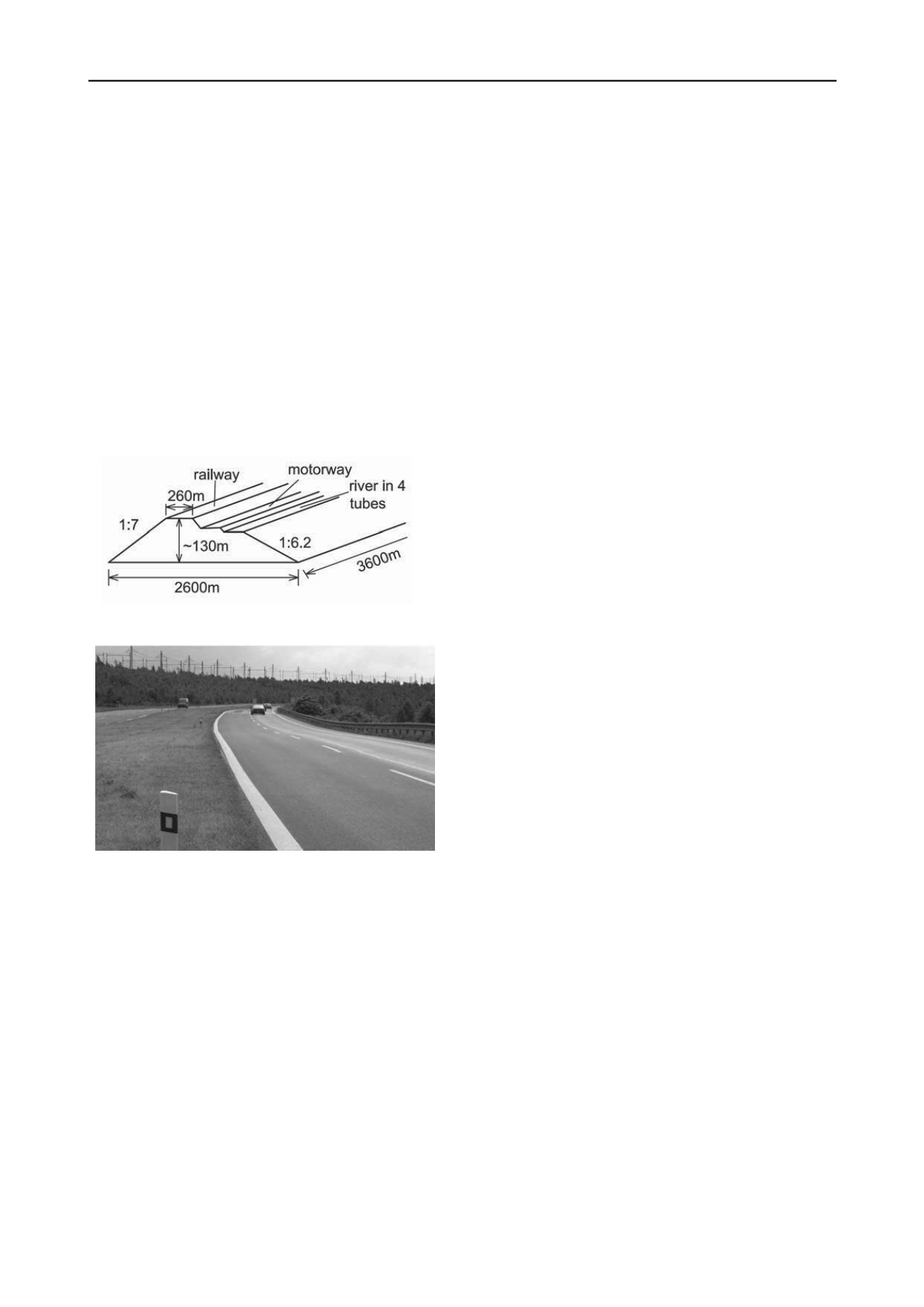
3262
Proceedings of the 18
th
International Conference on Soil Mechanics and Geotechnical Engineering, Paris 2013
3
er
ly
ina
count:
al load, which has to be
f additional fill and with time
measures the different approach is usually
ch
etc.
e bit higher values as for
cepted ones this
situation has to be solved with the help of the following steps:
-
to select such construction system which is not so sensitive
settlements; or
-
role of the
geotechnical engineering for environment protection, especially
stainable construction, from the view which
r all society. Three practical examples
5
Van
Van
Van
Van
Vod
Van
Geotechnical
Problems with Man-Made and Man Influenced Grounds
- XIIIth
European Conference on Soil Mechanics and Geotechnical
Engineering, Volume 3. Praha: ČGtS ČSSI, p. 343-348.
Butcher, Powell and Skinner 2006.
Reuse of foundations for urban sites.
A best practice handbook. IHS BRE Press. Bracknell.
THE UTILIZATION OF THE SURFACE OF THE
MINING SPOIL HEAPS FOR NEW CONSTRUCTION
Roughly 200 mil. m
3
of clayey material which overlay
brown coal seam are removed and backfilled during open pit
mining activity in the Czech Republic each year.
As extremely large part of the country in this area is affected
by mining activity the construction of new structures on the
surfaces of these spoil heaps is nearly necessity. The first
condition is connected with long term slope stability as material
properties are changing with time as well ground water level,
(Vaníček and Chamra 2008). Second condition is connected
with settlement, first of all with differential settlement, as this
uncompacted clay fill has sometimes extreme elevation – more
than 100 m. Typical example is Ervenice corridor, (Dykast et al
2003), with cross section shown in Figure 8. Only for top lay
about 5 m little bit better material was applied and part
compacted. Nevertheless this layer significantly elim
differential settlement, so that motorway on the top can b
without special limitation (see Figure 9) even when the total
settlement exceeded 2 meters.
ted
e used
from the view of Su
is very sensitive fo
Figure 8. Schematic cross-section of Ervenice corridor
Figure 9. Photo of the top of Ervenice corridor
For classical objects founded on the spoil heaps surface the
following approaches are applied:
Among passive measures we can
-
postponing the new construction – however sometimes this
condition is unacceptable;
-
using some methods of deep foundations like piles – but
solution can be limited by height of fill, by economical
reasons and a negative skin friction should be taken into
account;
-
preconsolidation with addition
removed after a certain time – very problematic as it is
connected with huge volume o
needed for which this additional loading have to be applied.
Among active
osen for total and for differential settlements. Higher value of
total settlement can be accepted if:
-
special technical solution is applied for engineering services
as electricity, gas, sewage…,
-
rectification can be applied e.g. for railway tracks, pipelines
But most sensitive questions are connected with differential
settlements with direct impact on damages to the structural
elements and to the manner of the practical use of the structures.
There we cannot so easily accept littl
total settlement. Therefore if the probability that the expected
different settlements will be higher than the ac
to the differential
to improve the subsoil beneath foundations as was
mentioned at the beginning of this chapter.
4
CONCLUSION
Short overview is stressing a significant
supported this general aspect from which new problems which
our profession has to deal with are clearly visible.
REFERENCES
Dykast et al 2003 Ervěnice corridor – 130m high spoil heap from clayey
material – with transport infrastructure on its surface. XIIIth
European Conference on Soil Mechanics and Geotechnical
Engineering, Volume 4. Praha: ČGtS ČSSI, p. 57–76. ISBN 80-
86769-03-8.
Jirásko D. and Vaníček I. 2009. The Interaction of Groundwater With
Permeable Reactive Barrier (PRB).
The Academia and Practice of
Geotechnical Engineering
. Cairo: IFOS, p. 2473-2478. ISBN 978-
1-60750-031-5.
Suthersan S.S. 1997.
Remediation Engineering. Design Concepts
. CRC.
Lewis publishers, New York
íček I. 2010. Urban Environmental Geotechnics Construction on
Brownfields.
Geotechnical Challenges in Megacities
. St.
Petersburg: GRF,. p. 218-235. ISBN 978-5-9902005-2-4.
íček I. and Chamra S. 2008. The Influence of Extreme Raiinfall on
the Stability of Spoil Heaps.
10th Int. Symp. on Landslides and
Engineering Slopes.
London: Taylor and Francis, p. 1653-1658.
ISBN 978-0-415-41196-7.
íček I. and Valenta J. 2009. Examples of the use of environmental
urban geotechnics for brownfield redevelopment.
Engineering
Geology for Tomorrow's Cities
. London: The Geological Society of
London. ISBN 978-1-86239-290-8.
íček I. and Vaníček M. 2008.
Earth Structures in Transport, Water
and Enviromental Engineering
. 1. ed. Berlin: Springer
Science+Business Media. 637 p. ISBN 978-1-4020-3963-8.
Vaníček I.et al 2003. Remediation of Chemical Landfills in Neratovice
and Chabarovice.
Geotechnical Problems with Man-Made and Man
Influenced Grounds
- XIIIth European Conference on Soil
Mechanics and Geotechnical Engineering, Volume 4. Praha: ČGtS
ČSSI, p. 279-294. ISBN 80-86769-03-8.
ička et al 2009. Utilization of fibre-concrete in earth structures.
Sustainable construction 5
. CTU press, Prague, pp. 107-112.
Vaníček et al 2012. Sustainable Consruction.
Sustainable construction
CTU press, Prague ISBN 978-80-01-04873-3.
íček et al 1997 Remedy of a chemical waste dump with foundation
of a new dump on its surface. In Proc. 14th IC SMGE, Hamburg,
vol 3, pp 1857–1860.
Chow 2003. Geotechnical aspects of tunnelling reuse of foundations and
building on landfill in brownfield development.


